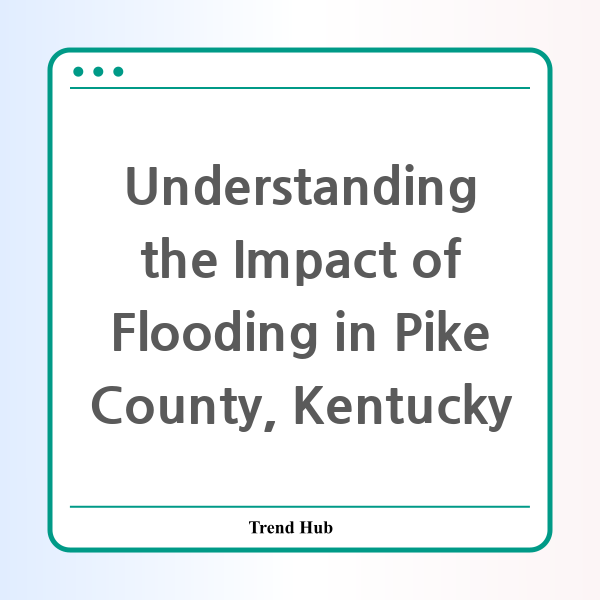* This website participates in the Amazon Affiliate Program and earns from qualifying purchases.

The recent devastating floods in Kentucky, particularly impacting areas like Pike County, have sparked national concern and highlighted the urgent need for community support and disaster preparedness. The loss of lives, including a mother and her seven-year-old daughter, has deeply affected not just the immediate communities, but also resonated across the nation.
Severe weather events have always had the potential to bring destruction, but the frequency and intensity of these events seem to be increasing, raising questions about climate change and infrastructure resilience. With Kentucky Governor Andy Beshear announcing a tragic death toll of at least 11 individuals due to the flooding, the state is reeling from the aftermath of nature's fury.
As officials work tirelessly in the search and rescue phase, the statistics reveal a grim picture. Over 1,000 rescues have been completed across the state since the onset of the storm, which dumped over eight inches of rain in parts of Kentucky and Tennessee. In just a matter of hours, the heavy rainfall transformed familiar roads into fast-moving rivers, catching many residents off-guard.
Local authorities have stressed the importance of staying off the roads during such extreme weather conditions. The perils of driving in flooded areas were evident, with many fatalities resulting from vehicles getting stuck in high water. Governor Beshear's plea for residents to prioritize their safety is a crucial reminder of the dangers posed by severe weather and flooding.
In the wake of this tragedy, communities from neighboring states, such as Asheville, North Carolina, have stepped up to offer support. Fire departments and emergency response teams have dispatched personnel to assist in relief efforts, showcasing the spirit of camaraderie that thrives in times of crisis. This kind of mutual aid is vital as it not only provides immediate assistance but also fosters a sense of hope and resilience among those affected.
Looking ahead, the United States is bracing for another storm system that could exacerbate the situation in Kentucky and surrounding states. With forecasts predicting extreme cold and snowfall, the challenges facing recovery efforts are mounting. Areas that have already been battered by rainfall might now face the risk of snow accumulation, leading to further complications in providing relief to those affected.
The pressing need for effective disaster response plans, improved infrastructure, and heightened public awareness about the risks of extreme weather cannot be overstated. As communities rally to help one another, it is essential to also focus on long-term strategies that increase resilience against such devastating events.
In conclusion, the heartbreaking events in Pike County and across Kentucky serve as a powerful reminder of our vulnerability to nature's unpredictability. Through compassion, collaboration, and a commitment to preparedness, we can better equip ourselves and our communities for the storms that lie ahead.
* This website participates in the Amazon Affiliate Program and earns from qualifying purchases.